What's behind India's second wave? There is a lot of variation between cities, so in trying to answer this question, it's best to look at a single city like Bengaluru. Why did cases in this city start to dip in October 2020? And why did they start to rise in March 2021? And what can we say about the pandemic from the answers to these questions?
The answers to these questions could help us understand pandemic in greater detail, and plan our response. The goal of this essay is to illustrate the potential factors that are in play, and how they interact. A lot of data is still required to predict which of these factors are most important in any given city.
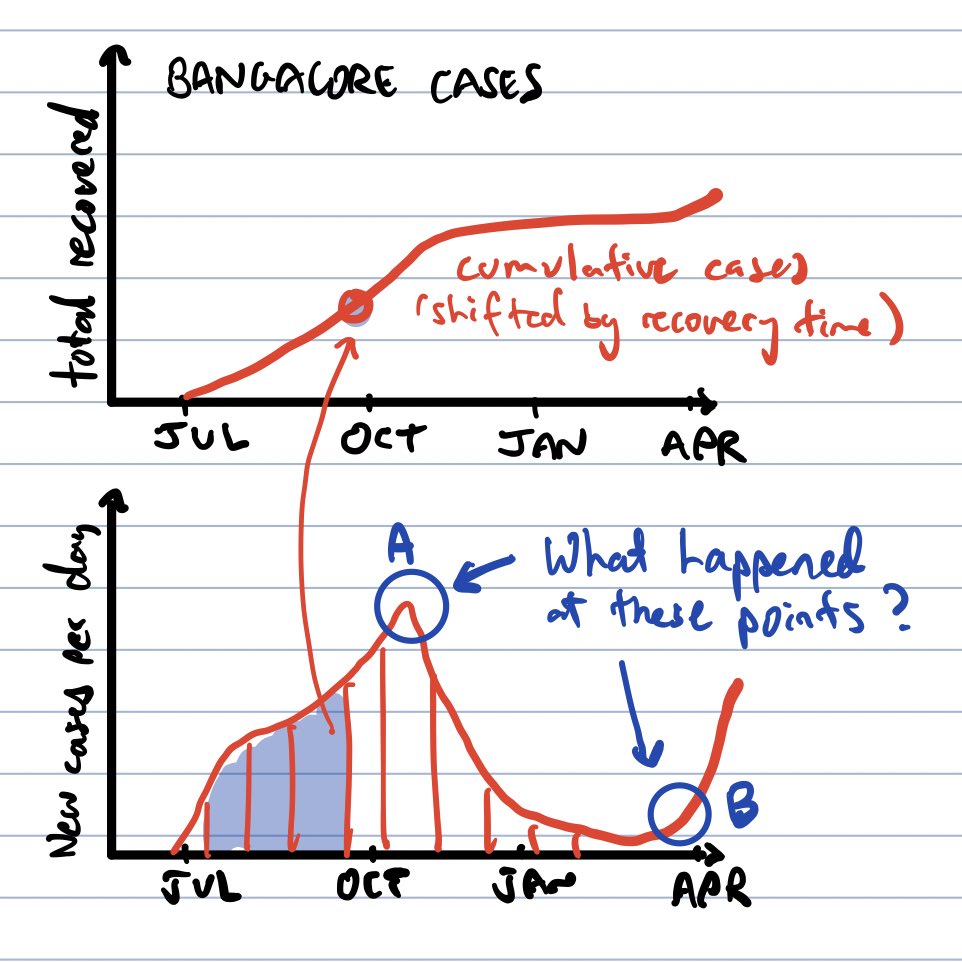
Consider the city at the beginning of the pandemic. If no one is immune, then one infected individual would cause a certain number of infections. The actual number depends on both behaviour and viral biology. Let's call this number 'R0', going by the scientific convention. We can also define something else, which we'll call the 'level of caution', which is the inverse of R0 (see some simple calculations using three examples below). Less cautious people cause more infections.
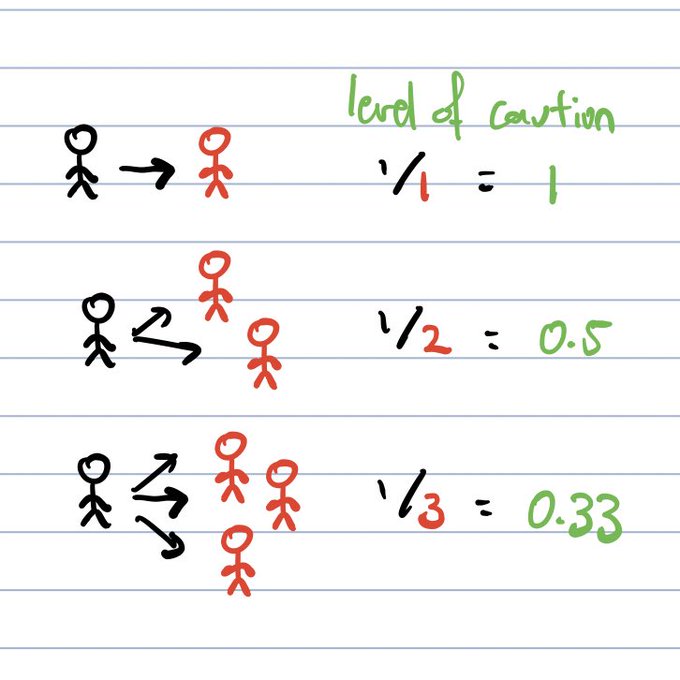
Next we need to understand herd immunity. In the graph below, the red line is the fraction of people who have recovered, and so are immune. This curve is measured from the bottom. Also shown, in green, is the level of caution. This curve is measured from the top. When the red and green curves cross, new cases per day start to fall. This is 'herd immunity'.
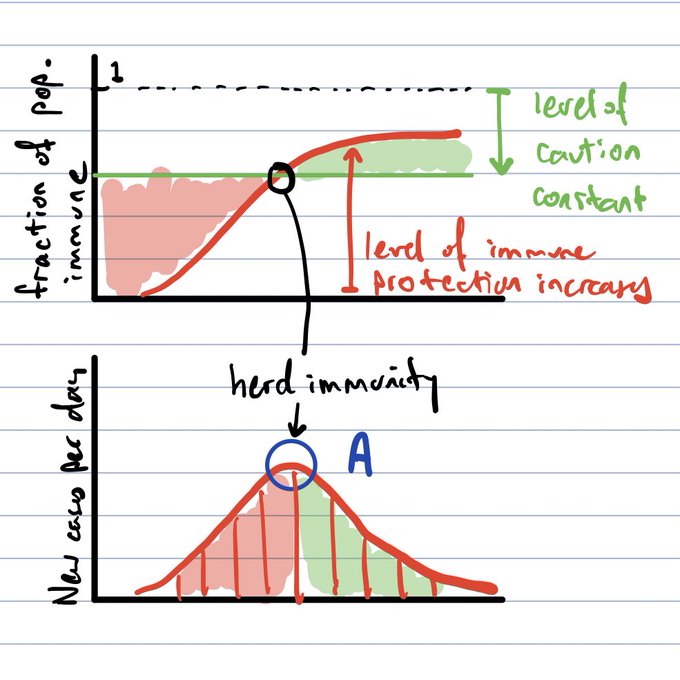
What happens if we drop our guard? The level of caution drops, so the standing level of immunity is not enough to stop infections spreading. More people get infected, until we hit a second herd immunity threshold. This kind of second wave is usually smaller than the first.
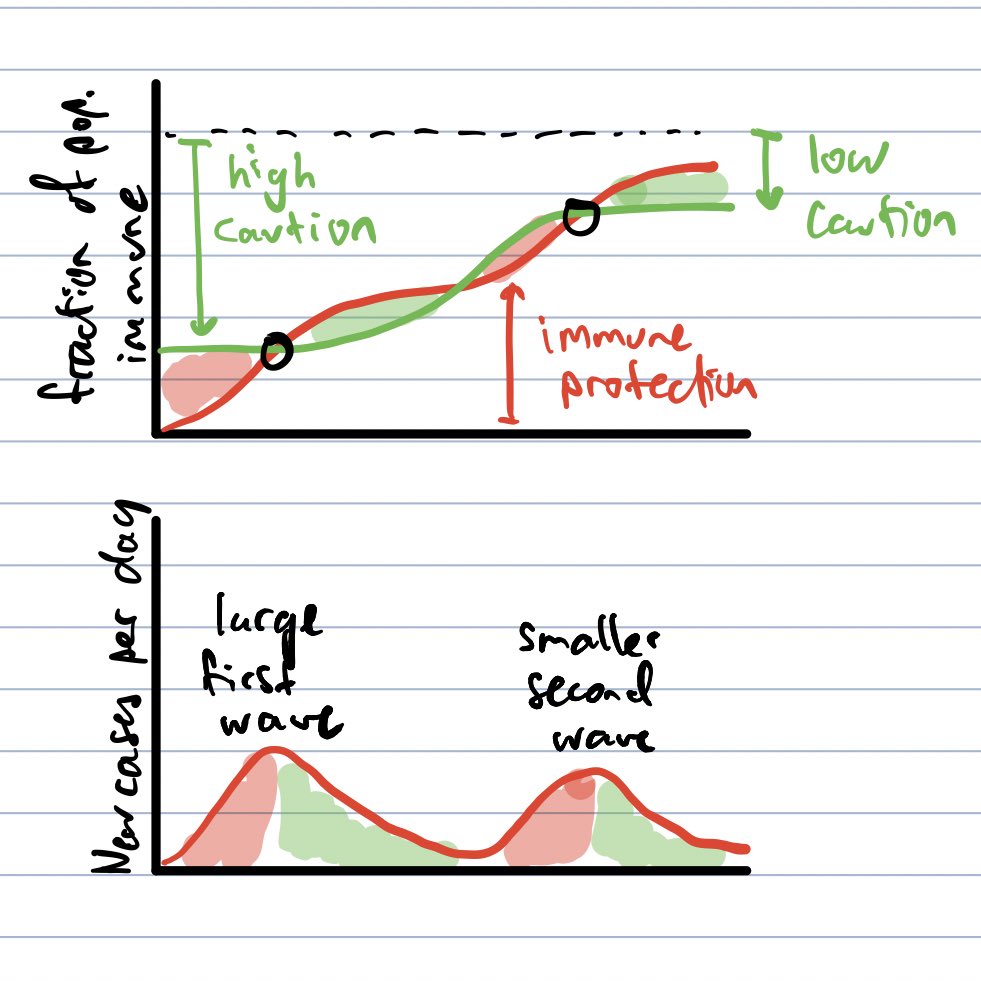
After the first wave, broad immunity keeps new infections low even if people are less cautious, or if a more infectious strain arises. But immunity fades, and new strains can potentially evade the immune system. Someone who has recovered could be reinfected. The combination of less caution and lower immunity drives a large second wave.
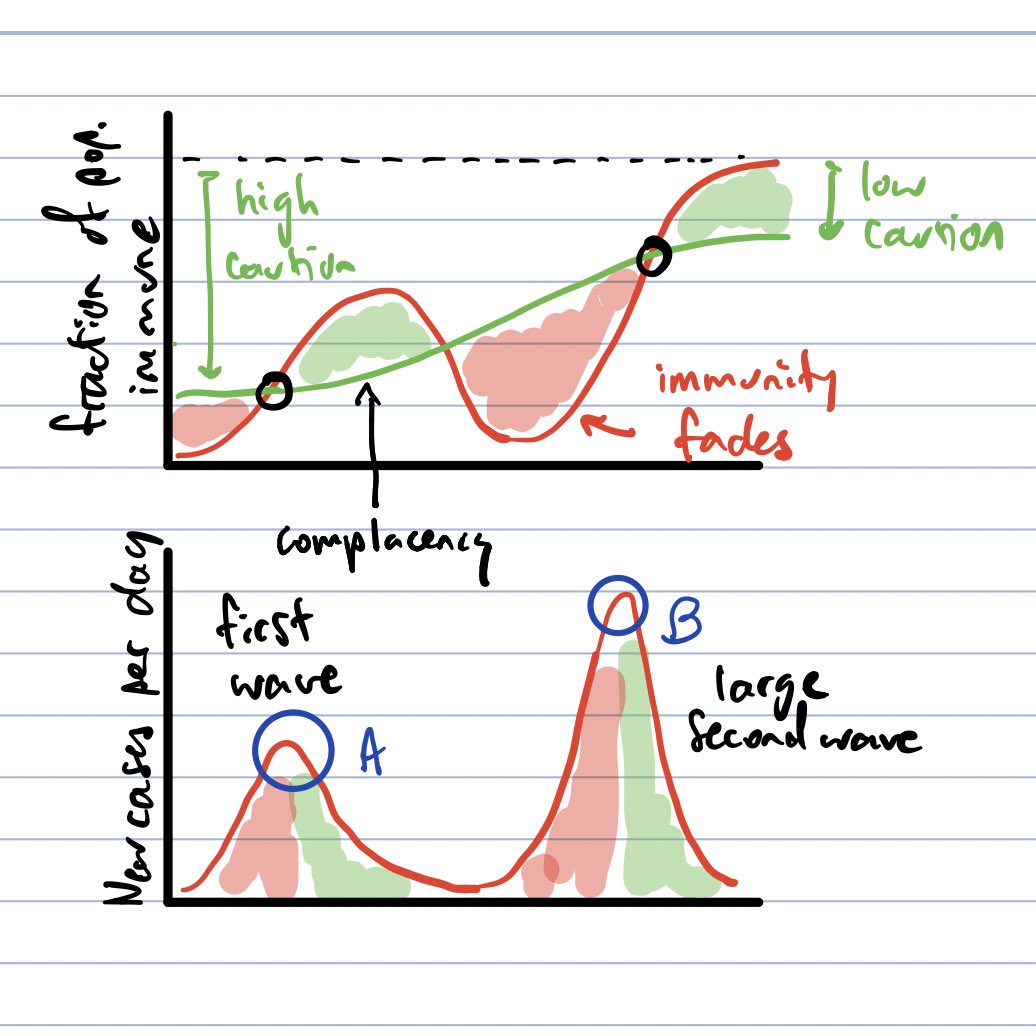
An important takeaway from this analysis is that the underlying factors (like the level of caution or the circulation of a new strain) could change slowly, but the level of spread could still change suddenly. Why is this? It’s because these sudden changes occur when two slowly-changing curves cross one another.
Fading immunity is why 'natural herd immunity' won't end the pandemic. But we can increase immune protection through widespread vaccination. The good news is that the available vaccines do seem to provide broad protection against severe disease, across strains. The jury is still out on how effective they are at preventing transmission, so it is still important to mask up and maintain social distancing.
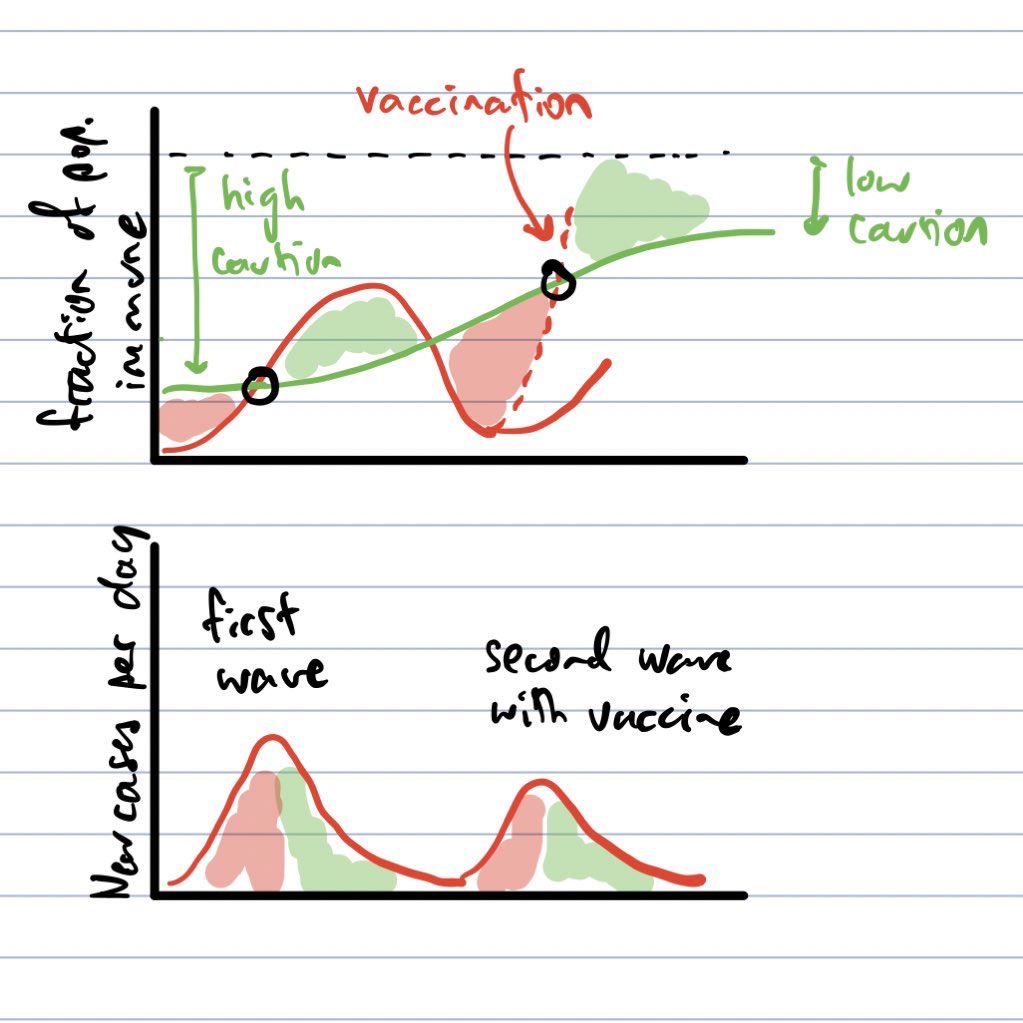
So stay cautious, and if you are eligible, get vaccinated as soon as you can! You will be protecting yourself as well as those around you.























